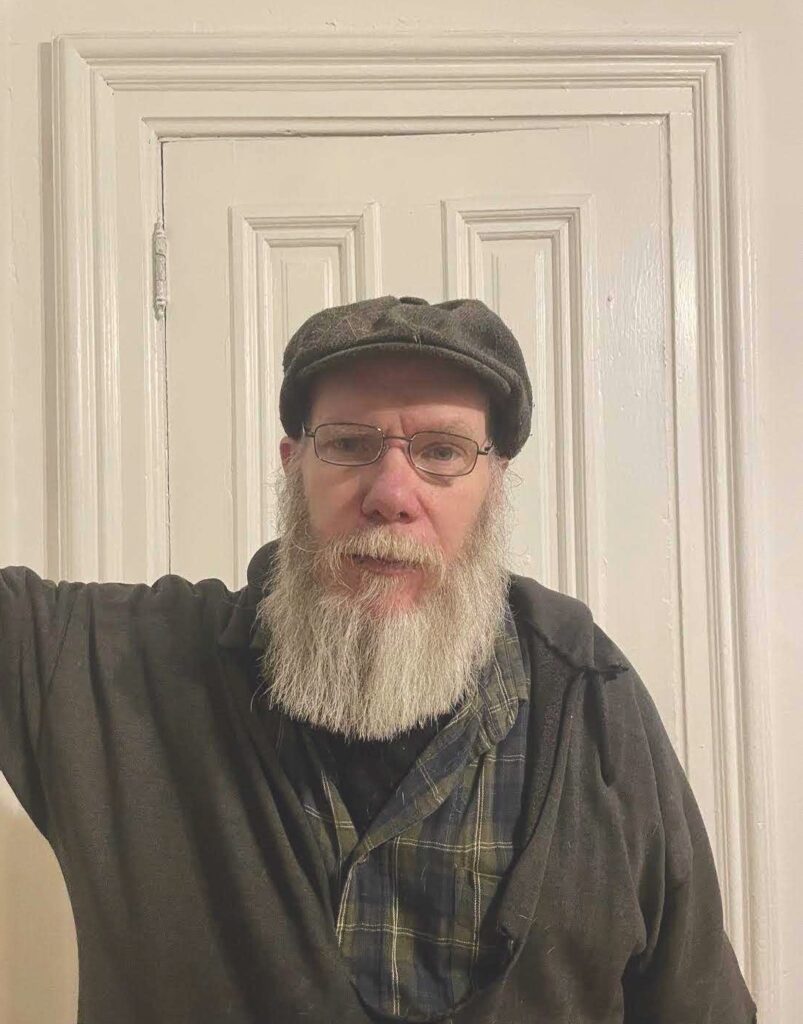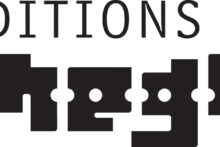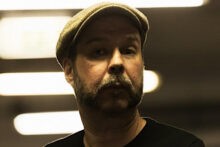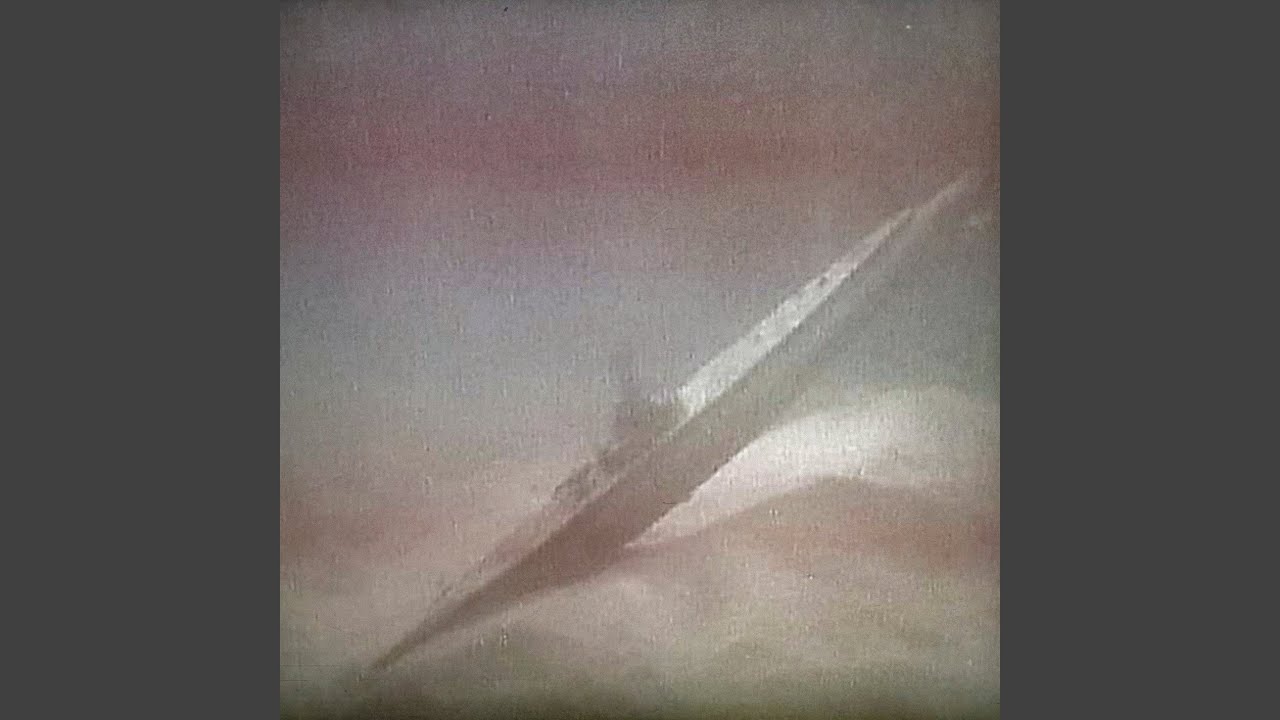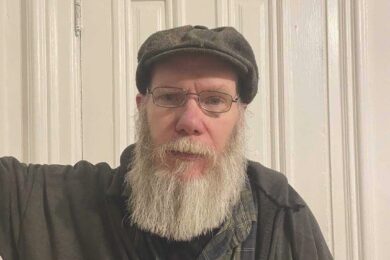Kevin Drumm’s music draws attention to the act of listening, perhaps even the workings of our ears themselves. Since the 90s, he’s moved through uncompromising extremes. Some of his records are ferocious, others barely audible. Some zoom in on harsh minutiae, others are glacially beautiful. Yet the Chicago-based artist never seems to venture to the edges purely for the sake of it. His fiercest tracks aren’t sheets of noise but richly layered and fluctuating. His most minimal moments have a gravity well beyond ambient. When you hear a Kevin Drumm piece, you always know what it is you’re listening to.
His latest record of new material, Sheer Hellish Miasma II, on Erstwhile, reprises the title of an album released on Editions Mego in 2002. The first Sheer Hellish Miasma was intense, and the sequel ratchets it up further. Beginning with a torrent, the two tracks on the double CD barely lift for a second. As your ears adjust, what seems like a wall of static comes into focus. Details emerge, glimpses of form encourage your ears to scan for more. A mode of listening akin to having your eyes move across a vast canvass equal parts Rothko and Pollock to take in every detail. If you listen close enough, you might even hear a slither of Greg Kelley’s trumpet, which appears on this record (as it did the first Sheer Hellish Miasma) but has been pulverised out of recognition.
The idea to reference the earlier record came from Erstwhile’s founder, Jon Abbey. Tellingly, he mentions wanting to “tap into the aura” of that earlier album, illustrating the monumental impact Drumm pulls from abstract sound. By Sheer Hellish Miasma II’s end, you find yourself listening differently to whatever surroundings take up the hole left by Drumm’s music.
“I’ve kind of been fiddling with music for a long time, not sure how long,” Drumm explains over email when I ask what brought him to, for want of a better word, experimental music. “Conventional music or whatever it’s called can be cool still I just – like a lot of people – grew interested in other things besides songs on the radio.”
Early on, he centred on extended approaches to guitar, documented on his self-titled debut and a cameo on Gastr Del Sol’s Upgrade & Afterlife. Since then, the sources of his sounds have become increasingly ambiguous, pulling in electronics, field recording and more. While he’s put most of his work out under his own name, he’s collaborated with a diverse variety of players, including ultra-minimal guitarist Taku Sugimoto, Axel Dörner, Jason Lescalleet and Mika Vainio. All artists committed to defying convention, they perhaps offer a rough set of coordinates within which to situate Drumm’s practice.
In broad strokes, his music resonates with the more homemade ends of noise, drone and minimalism while also having a nuance and clarity that goes beyond them. It makes sense in relation to lineages such as electro-acoustics and musique concrete but it is typically more direct than those traditions and isn’t produced in the high-end institutions that usually foster them.
“I don’t really have a studio,” Drumm relates. “It’s been a joke for probably 20 years or so that I record at a different studio all the time. Years ago, I shared a large apartment with a friend. I had three rooms to myself, I’d move my gear around every six months or so. Everytime I did I would think of it as a new space. Nowadays, I rent a tiny room and what little stuff I have is stuffed in there. I have a desk, mixer and speakers, a couple gadgets and a couple laptops, books, and that’s it.”
Over the years, Drumm has released records on labels such as Hanson, PAN and Drag City as well as Editions Mego and Erstwhile. You could map his career through these albums, from the ferocity of the Sheer Hellish Miasmas and Land Of Lurches to the barely there Trouble, via the spooky zones of OG23 and Imperial Distortion. Yet these are only part of the story. Drumm has self-published a wealth of music through his Bandcamp page in between. More than offcuts, these releases are a vital extension of his work, reaching into zones and textures he hasn’t explored on physical formats. “I just kind of blow with the wind I guess,” is his response when I wonder if there are chronological patterns or trends in his discography. “I do this stuff all the time, and it’s probably unorthodox but digital, LP ,CD ,minidisc, tape…they’re all kind of the same to me nowadays.”
Some of these Bandcamp releases have recently been collected in a ten-disc boxset, If Tomorrow Gets Here, on Ideal Recordings. Yet even this beast of a collection only skims the surface, barely hinting at his prolific output.
On Christmas Day last year he released Winter, a gorgeous, sighing drone coloured with rich overtones. Five releases have emerged on his Bandcamp since (at time of writing). Winter comes with the cryptic liner note, “Regards to the DC-Offset Police”. In a way, it perhaps reveals something about Drumm’s approach. His music is considered, it hits striking levels of commitment to both ends of the loudness scale, yet it never becomes too academic or technophilic.
“It’s just a bit of a joke,” he reveals of those liner notes. “I’ve noticed over the years how people have become super strict when it comes to wavefiles, waveforms etc. Everything needs to be neat and tidy. Some good friends of mine have very softly mentioned a couple times that I should do something about the DC offset of some files, explaining that I might not hear the offset, but my stereo/speakers will notice. I couldn’t get 100 bucks for my stereo and speakers if I tried, but they sound fine to me…”
‘1’ from S/T (1997)
Kevin Drumm: I wanted to make a solo guitar record. I’d thought about and attempted it on and off for a couple of years. But, for whatever reason, I wanted to make it more ‘musical’. However, I didn’t really play the guitar in a very musical way. I wrote notes down, had kind of a structure in mind. I had two or three recording sessions at a proper studio but it ended up not feeling right, simply because I didn’t play that way live. I was also a little nuts about how it sounded. I wanted a very dry sound and I couldn’t get it until I realised I was just looking for a very direct sound. Direct sound meaning ‘just plug the amp output into the recorder’. Once I figured that out, I recorded the thing in one afternoon in a ‘warts and all’ type of approach. I first met Jim O’Rourke way back in 1990 at a place called Dreamerz [O’Rourke’s credited with loaning a DAT machine for Drumm’s self-titled debut, and the two were roommates for a while]. I didn’t know who he was at the time, I knew of Illusion Of Safety though. But a couple years later we met and just kind of hit it off. Again, there weren’t too many people,-that I was aware of at least, who were into experimental/ noise/ free jazz stuff. He knew way more about that stuff than me, so we became friends. In the mid 90s in Chicago this kind of music had an audience of 1 to 10 people, maybe 15, sometimes 25.
‘Front Room A’ from Folie Á Deux – split with Taku Sugimoto (1998)
[A duo of Drumm and Taku Sugimoto recorded the album Den for release on Sonoris. However that recording is no longer available officially online.]
KD: Taku and some friends of his from Tokyo visited Chicago and I got to play with them once or twice. The Chicago group known as TV Pow later went to Japan for six months. Brent Gutzeit of TV Pow came back to Chicago and said that Taku Sugimoto would like to play with you again. That’s pretty much how it started. The way Taku played guitar and the way I did back then was quite different. The Den CD on Sonoris was the best for me. I don’t know if the recording captures it, but live it was really great, for me at least. It’s simply one of those things that ‘you had to be there’ and if you were there you might not find it all that special either. It was the space I think. My tracks from the split are called ‘Front Room’, probably just because I recorded them in the front room of my apartment.
‘Hitting the Pavement’ from Sheer Hellish Miasma (2002)
KD: I got in contact with Peter Rehberg probably 1996 or 1997. Did we meet in real life? Well, probably only a thousand times. I went to Austria a bunch of times and stayed at his and Isabelle’s place most times I was there. He stayed at the various apartments I’ve had in Chicago about as many times. So yeah we knew each other really well. They are definitely different [Sheer Hellish Miasma and Drumm’s self-titled debut] but I would say there are similar elements. It’s too convoluted of a story to explain what led up to the change. I’ll just say that change isn’t always a bad thing. I almost never listen to the first record, but I have heard it. What I think of when I have heard it is how I listened to it a few times before sending it off with the lights off and loud and I would fall asleep while doing so.
‘Needleprick’ from Necro Acoustic (2010)
KD: Necro Acoustic is just a name I came up with. I’m a big fan of electro-acoustic music and a lot of it is very well recorded, for lack of a better term. The stuff I use to record my stuff has always been kind of crappy and so I just stumbled on this title.
Do you consider these sounds abrasive or uncomfortable? What attracts you to working with specific sound sources?
KD: Somewhat abrasive but at the same time I can listen to that sort of stuff almost endlessly. I guess ‘abrasive’ and ‘uncomfortable’ can be pretty subjective. Simply, I have to just ‘get into it’ with a sound. There are sounds that for one reason or another I just gravitate towards. I can listen to a cascading 9k-14k sine bath for hours or a wall of distortion for just as long.
‘I’ from Venexia (Mika Vainio Kevin Drumm/Axel Dörner /Lucio Capece) (2012)
KD: Lucio Capece formed that group. I’d already known Axel (Dörner) for some time and knew Mika (Vainio) a little bit. Lucio just asked if we wanted to do something and we all decided to do it. At the time I thought it was the Lucio Capece Quartet but as we were on tour he mentioned that wasn’t the name of the group. I really liked doing that group whenever we had the chance. This concert was a pretty good time. We had some loose structures for pieces and we kind of played the same four or five pieces each night. I remember Mika brought a box of cigarillos and about five books with him for that tour and spent a lot of time reading and smoking.
‘Trouble’ from Trouble (2014)
KD: It was made in my apartment. I was just working on this stuff, with no real concept in mind. As I was going the idea of it being a really low-level listening experience made sense to me. Sarcastically and probably self deprecatingly I referred to it as ‘cheesy sci-fi incidental music’ and said it should be listened to at lowest volume possible. To the point where it sounds as far away as a car horn beeping six blocks away. I had a pretty quiet space at that time and I would just work on it in that volume zone. It was recorded very quietly, mastered quietly and meant for very low-level listening. If you were to turn it up to say volume five or six on a stereo because it was seeming too quiet then the effect I was going for wasn’t going to come across. Peter Rehberg didn’t say much when I sent it to him. One of the other great things about Peter was if he asked if you wanted to do something for Mego there was very little if any interference from him. There were no demands or anything. My guess would be that he wasn’t too into it, and that’s just a guess.
‘Guillan-Barre’ Imperial Distortion (2016)
KD: With Guillan-Barre, my dad had that the last few years of his life [Guillain-Barré syndrome is an autoimmune disease that affects the nerves]. He couldn’t move his arms, if someone helped him move them he’d get ragingly painful pins and needles. Just a rough way to go through life in my opinion and I paused to think about it once and awhile and still do. What I remember about that track is it’s pretty static and doesn’t move very much, so for whatever reason, I called it ‘Guillan-Barre’. I was doing something else for Hospital Productions and it wasn’t going the way I wanted it to, so I just started listening to some old stuff [the tracks on Imperial Distortion were created between 1997 – 2008] and gradually, but pretty quickly I had compiled a bunch of ‘go-nowhere’ tracks and sent it to the label. We decided to release it as a double CD.
‘Less Than Half As Loud’ Less Than Half As Loud (2017)
KD: I think I just like this track for some reason. Most of it was sourced from this old accordion I used to have. I liked using an accordion as source material. I definitely can’t play an accordion properly. The cover’s a drawing my daughter made when she was about four. I really liked the colours, the animal with the turned up neck, the odd musical notes coming out of the horn. For a minute there was going to be a vinyl version of it. I don’t think that will happen but I would have liked to have an LP cover of that drawing.
‘Sand & Salt’ from Sand & Salt (2021)
KD: I’m pretty sure I made this in a week, put it out and then just kind of forgot about it. As far as the title goes, I’m one of these types that most days I just take a pen and write in a notebook for 30 minutes or so. It’s not real thoughts, I’m not trying to write or communicate something, it’s just kind of dumping the trash that’s in my mind. Somewhere in a pad I wrote, “sand and salt”. I don’t remember the context but a day or so later, I was reading a book – I don’t remember which one – and I came across the words “sand and salt”. It was just a slightly strange synchronicity I guess. I try to keep track of those things. Coincidence, synchronicities, whatever they’re called. I’ve had some good ones. As far as the source material goes, I think it is some field recordings mixed in with electronics. The cover image is of a bunch of icicles that formed outside the porch of my apartment.
‘Part One’ OG23 (2024)
KD: I probably made this two to three years ago. Frankly, I’ve got nothing better to do so I do this stuff all the time. I mean, I do have better things I could be doing, it’s just that I don’t always do them, so I do this stuff instead. And OG23 is one of those. I sent the recording to Christoph Heeman. He had asked if I wanted to do a record for Streamline, I said yes and I was planning on making a record but he heard OG23 and thought it would make a good vinyl release so that’s what happened. The cover was Christoph’s idea. He said as he was listening to it, he got the feeling he was in a submarine and sent me the photo that became the cover. I liked the idea of it. It’s a pretty crude photo but I really like it.

